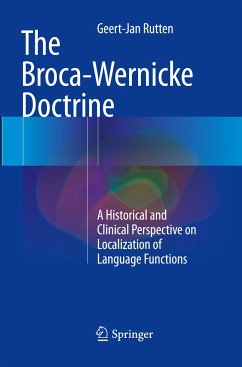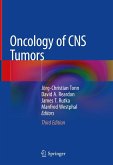This book discusses theories that link functions to specific anatomical brain regions. The best known of these are the Broca and Wernicke regions, and these have become synonyms for the location of productive and receptive language functions respectively. This Broca-Wernicke model has proved to be such a powerful concept that is remains the predominant view in modern clinical practice. What is fascinating, however, is that there is little evidence for this strictly localist view on language functions. Modern neuroscience and numerous clinical observations in individual patients show that language functions are represented in complex and ever-changing neural networks. It is fair to say that the model is wrong, and that Broca's and Wernicke's areas in their classic forms do not exist.
This is a fascinating paradox: why do neurologists and neurosurgeons continue to use these iconic language models in everyday decision-making? In this book, the author uses his background as a neurosurgeon and a neuroscientist to provide some answers to this question.
The book acquaints clinicians and researchers with the many different aspects of language representation in the brain. It provides a historical overview of functional localisation, as well as insights into the misjudgements that have kept the localist doctrine alive. It creates an awareness of the need to integrate clinical observations and neuroscientific theories if we want to progress further in clinical language research and patient care.
This is a fascinating paradox: why do neurologists and neurosurgeons continue to use these iconic language models in everyday decision-making? In this book, the author uses his background as a neurosurgeon and a neuroscientist to provide some answers to this question.
The book acquaints clinicians and researchers with the many different aspects of language representation in the brain. It provides a historical overview of functional localisation, as well as insights into the misjudgements that have kept the localist doctrine alive. It creates an awareness of the need to integrate clinical observations and neuroscientific theories if we want to progress further in clinical language research and patient care.
"Geert-Jan Rutten's book The Broca-Wernicke Doctrine offers an extraordinary journey through language localization, symptomatology, and its history. ... After reading this book, the reader will have a broad panorama of language in neuroscience ... . A must read for each neurosurgeon interested in the field of aphasia and also in localization of brain function." (Adrien Thomas May and Karl Schaller, Acta Neurochirurgica, Vol. 160 (2), February, 2018)
"Geert-Jan Rutten seeks to clarify historical and current concepts of how brain regions relate to language and other functions. The result is an entertaining and enlightening tour of the history of cerebral neuroscience. ... This book is clearly targeted to neurosurgeons and neuroscientists and includes an appropriate level of scientific detail, yet it is consistently engaging and easy to read with logical organization and excellent summaries." (Jonathan Miller, Neurosurgery, January, 2018)
"Geert-Jan Rutten seeks to clarify historical and current concepts of how brain regions relate to language and other functions. The result is an entertaining and enlightening tour of the history of cerebral neuroscience. ... This book is clearly targeted to neurosurgeons and neuroscientists and includes an appropriate level of scientific detail, yet it is consistently engaging and easy to read with logical organization and excellent summaries." (Jonathan Miller, Neurosurgery, January, 2018)








